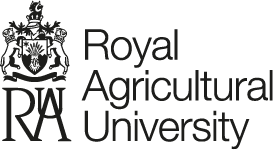Enhancing the ecological ability of Permeable Pavements Systems (PPS) as urban stormwater Green infrastructure
Tota-Maharaj, Kiran, Douglas Hills, Colin, Chad, Staddon and Monrose, John (2024) Enhancing the ecological ability of Permeable Pavements Systems (PPS) as urban stormwater Green infrastructure. Journal of the Association of Professional Engineers of Trinidad and Tobago, 52 (1). pp. 4-16. ISSN https://www.apett.org/flipbook/#flipbook-japett_v52n1_2024-aprc1/7/
|
Text
49010 HILLS_Enhancing_The_Ecological_Ability_Of_Permeable_Pavements_Systems_PPS_As_Urban_Stormwater_Green_Infrastructure_(AAM)_2024.pdf - Accepted Version Available under License Creative Commons Attribution Non-commercial No Derivatives. Download (850kB) |
Abstract
Stormwater and urban surface runoff often transport contaminants such as hydrocarbons and heavy metals into natural watercourses and hydrosystems. A surge in impermeable surfaces covering natural vegetated surfaces is leading to an increase in flooding. Permeable pavement systems (PPS) such as a Sustainable Drainage System (SuDS) provides an ecological friendly solution in addressing the surge of stormwater runoff, surface water flooding an improving downstream water quality. Permeable pavement systems have emerged as a sustainable solution for stormwater management in urban areas. The principles of permeable pavements include providing a drainage system, improving water quality while maintaining a ground-bearing structure to transport vehicles. PPS are engineered to absorb, infiltrate, and attenuate a considerable amount of stormwater runoff to reduce flooding during storm events. These pavements additionally intercept pollutants because of their discrete particle retention capabilities. The filter media absorbs and remediates impurities, organic compounds, and hydrocarbons within the pavement structure. The research project focused on PPS enhancing stormwater quality which are also structurally viable, comparing subgrade and sub-base layers within the pavement structure and the ability to intercept various water pollutants and parameters from urban stormwater runoff. Two large-scale pilot PPS experimental rigs were designed, constructed, and tested according to British Standards guidelines for pavement designs (BSI, 2016) on the efficacies for improving stormwater treatment using low-carbon construction materials and recycled aggregates (gravel, pea gravel), sand and limestone. Stormwater was retained within the pavement structure for 30 minutes and 90 minutes analysing the outflow concentrations for operating temperatures, colour, pH, turbidity, nitrates (NO3-)., and ammonium (NH⁺₄). It was found that the effluent quality from the permeable pavements is notably superior to that of stormwater runoff without treatment because of the urban runoff impurities being trapped and remediated within the pavement structure. The mean removal efficiencies for turbidity, NO-3, and NH⁺₄ for the pavement systems ranged from 28.2 %, 27 % and 9.2 % for PPS-1 and 21.8 %, 27.3 % and 16.1 % for PPS-2. The T-Test statistical computation for 2 Independent Means of the stormwater effluent at significant level of 0.05 (Two-tailed test) and One Way Analysis of Variance (ANOVA) showed no significant differences in performance of the pavement systems.
| Item Type: | Article |
|---|---|
| Keywords: | Ecological Stormwater Infrastructure, Sustainable Drainage Systems (SuDS), Low Impact Development (LID), Permeable Pavements, Water Circularity |
| Divisions: | Land and Property Management |
| Depositing User: | Professor Kiran Tota-Maharaj |
| Date Deposited: | 09 Apr 2025 15:24 |
| Last Modified: | 09 Apr 2025 15:24 |
| URI: | https://rau.repository.guildhe.ac.uk/id/eprint/16911 |
Actions (login required)
 |
Edit Item |

